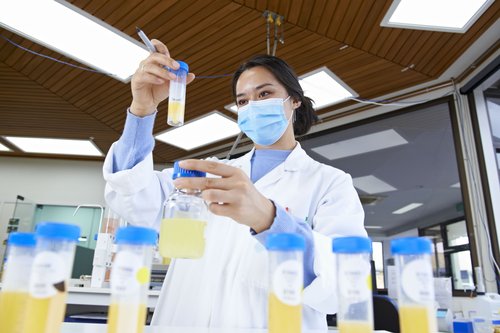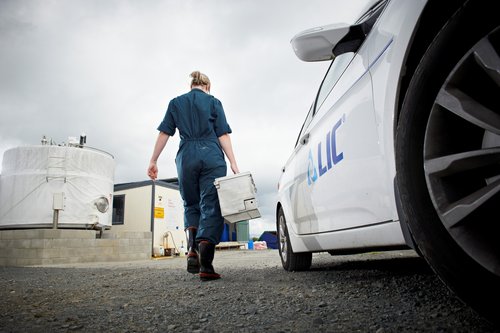Board Chair and CFO address

Murray King and David Hazlehurst talk through LIC's half-year result
Performance Highlights*:
- NPAT (net profit after tax) from Continuing Operations: $35.6 million, up 6.2% from $33.5 million in the same period last year
- NPAT from Discontinued Operations following divestment of the Automation business: $15.2 million
- Total revenue: $169.4 million, up 5.4% from $160.7 million
- EBITDA (earnings before interest, tax, depreciation and amortisation) $61.2 million, up 4.7% from $58.4 million
- EBIT (earnings before interest and tax): $50.0 million, up 7.0% from $46.7 million
- Underlying earnings (NPAT excl bull valuation change)* range is now forecast to be $22-26 million for year-end, compared to $22.3 million in 2020-21.
*Refer notes to financial information
Livestock Improvement Corporation (NZX: LIC) announces its half-year result for the six months to 30 November 2021, which shows continued strength in the farmer-owned co-operative’s financial performance.
Murray King, LIC Board Chair said the Board is pleased to present another strong result to farmer shareholders, particularly after a difficult period of Covid-19 restrictions and increasing cost pressure in the business.
“The LIC team worked hard to deliver a largely business as usual season to our farmers this season, despite our main bull farms and laboratories operating under the Level 3 Covid-19 restrictions that were in place in the Waikato for most of this period.

“Spring is the most important time of year for our farmers, and for LIC, when demand for our essential artificial breeding and herd testing services is at an all-time high. I want to thank our farmers for trusting us to continue to deliver to them during this time.
“It is also pleasing to note that the business has worked hard to manage costs during this time, and we remain on track to deliver another strong result at year-end.”
LIC’s half-year result incorporates the majority of revenues from LIC’s core artificial breeding (AB) and herd testing services, but not a similar proportion of total costs so are not indicative of the second half, nor the full year, result. Revenue from international business, technology products and animal health testing is also spread through the year.
King said the half-year result was driven by more farmers investing in the co-op’s premium artificial breeding (AB) products where young, genomically-selected bulls are used to fast-track genetic gain and deliver more value on-farm through increased productivity and efficiency, including improved environmental efficiency.

This year, more than half (50.3%) of total AB inseminations will be delivered by genomically selected young bulls, up from 41.3% last year and 12.6% in 2016-17. Within that, more than 200,000 sexed semen straws will be despatched to farmers, up from 110,000 last year, and 33,804 the year prior.
“With a focus on cow quality over quantity, we’re seeing more farmers turn to high genomic BW (gBW) sires to help them meet climate targets and drive efficiency gains.
“We’ve invested more than $80 million in genomic science over the last 30 years because we passionately believe in its power to enhance herd improvement and the role it will continue to play in the future of the New Zealand dairy industry.
“Genomic selection now underpins our breeding programme and we’re really proud of the value it is delivering on-farm. Last month we shared the latest research with our farmers which reaffirms that genomics is the high-octane fuel that will help drive the next wave of productivity and efficiency gains for their cows.
“It’s really encouraging to see that farmers that have predominantly been using LIC bulls over the last 10 years are achieving markedly higher rates of genetic gain in their herds than the industry average and seeing the benefit of our investment in genomics.”
The divestment of its automation business (NZX 8 June 2021) was also completed, with products, services and staff now transitioned to Allflex Livestock Intelligence, a NZ-based business unit of MSD Animal Health.
The co-operative also continued investment in Research & Development (R&D) projects including a major research project with the aim of being able to select for lower methane emitting dairy cows. Work to deliver on the improvement roadmap for MINDA, its cloud-based farm management software, also continued.
King said the co-op also farewelled Wayne McNee in November after 8.5 years as Chief Executive of LIC. Subsequently, David Chin, formerly LIC’s GM Operations & Service was appointed to the role and started on 17 January.
“Wayne led the organisation through a period of significant growth and development across all areas of the business while delivering strong shareholder returns, and LIC is a significantly better company than when he started in 2013.
“Wayne executed his duties to a high standard, setting strong expectations and operating with a high degree of professionalism. In turn, that level of performance has disseminated throughout the business, delivering strong financial results, including this half-year.
“We are confident David Chin’s leadership combined with his deep operational knowledge, energy and passion for delivering value to our farmers will serve the co-op very well into the future.
“On behalf of the Board I’d like to thank David Hazlehurst for stepping in as interim chief executive, supporting the transition to the new CEO and his ongoing contribution as Chief Financial Officer.”
No dividend is declared at half-year, however the co-op paid its first special dividend on 21 January to partially distribute funds from the divestment of its automation business in June 2021 (NZX 8 December 2021).
Outlook
Underlying earnings (NPAT excl bull valuation change)* at year-end is forecast to be in the range of $22-26 million, assuming no significant climate event or milk price change takes place between now and then, nor any major impacts from M. bovis or Covid-19. LIC expects underlying earnings* in 2022-23 to be in the range of $20-26 million.
ENDS
Download our Shareholder update
*Notes to Financial Information
Underlying Earnings is the company’s NPAT excluding bull valuation and nil paid share valuation movements and is considered useful to investors as it is the basis on which LIC has historically reported and it is the basis on which LIC makes its determination of dividends. Underlying Earnings for 2021-22 also excludes the one-off gain on divestment of Automation. Non-GAAP financial information does not have a standardised meaning prescribed by GAAP and therefore may not be comparable to similar financial information presented by other entities. As this is a half-year update, the numbers relating to November 2021 have not been audited. These numbers should be all read in conjunction with the interim financial accounts.
Accounting standards require profits from the Automation business for both November 2021 and 2020 to be separately disclosed as Discontinued Operations. This has resulted in restatement of all profit lines for November 2020 to exclude Automation (including revenue and R&D), therefore some November 2020 figures used in this statement for comparison to November 2021 will differ from the November 2020 Interim Results disclosure. Accounting standards prohibit separate disclosure of balance sheet items for November 2020, which still includes balances relating to the Automation business.




